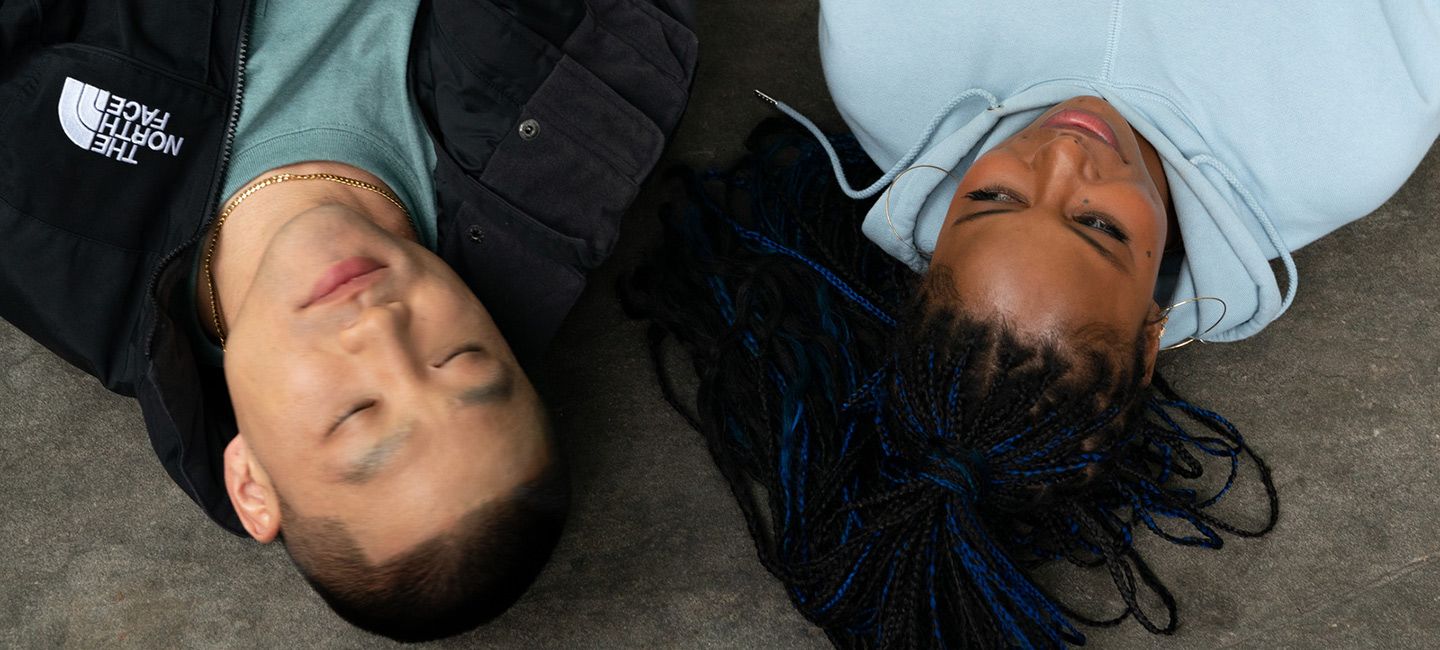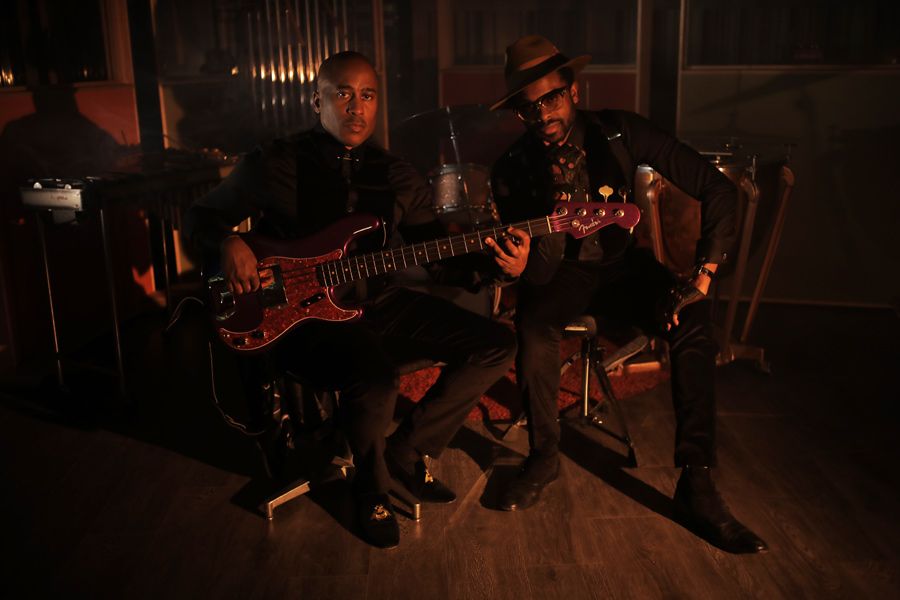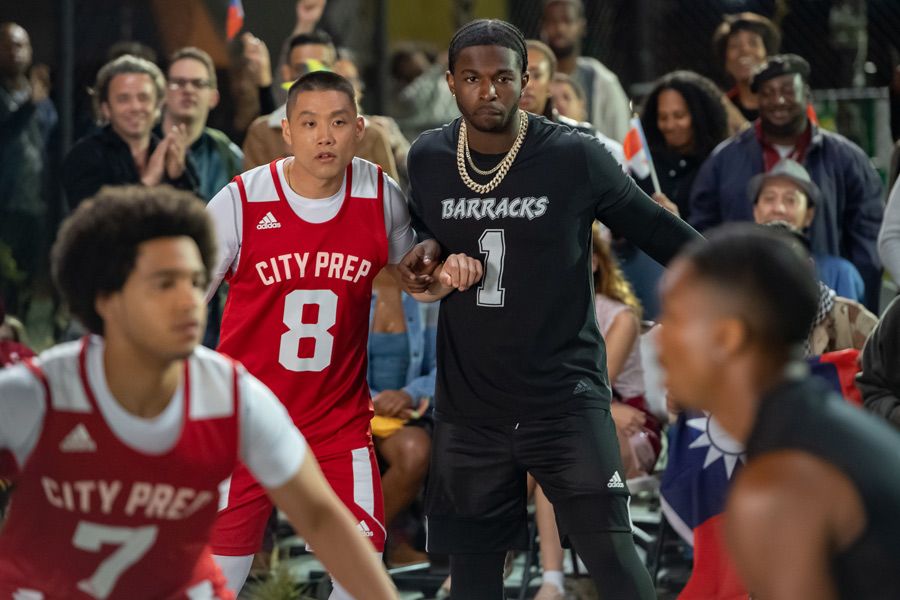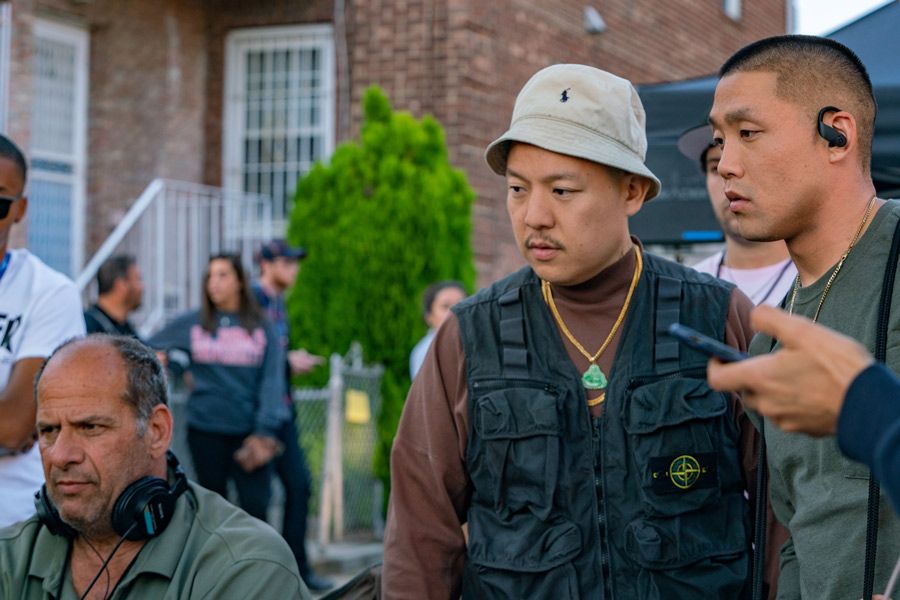
The New York Beat: Creating Boogie’s Score
A Q&A with composers Ali Shaheed Muhammad and Adrian Younge
On the surface, Eddie Huang’s Boogie is about a young basketball phenom, Alfred “Boogie” Chin (Taylor Takahashi), growing up in Queens, NY. But it’s also about the matrix of cultures that surround and define him. The son of Taiwanese American parents (Perry Yung and Pamelyn Chee), Boogie is also the child of New York basketball, street fashion, and hip hop — the music that fills the sidewalks and school yards around him. Huang, who based the screenplay loosely on his own experience, knew Boogie’s world inside out. “I’d known what everyone was going to wear in the movie for a long time,” Huang explains. “Same with the music.” When he cast the rapper Pop Smoke in the role of Monk, for example, Huang knew that he wanted both the man and his music, placing several of his songs in the soundtrack and letting his Brooklyn drill sound reverberate through the film.
To distill the film’s many hip hop and cultural strains into a single score, Huang turned to Ali Shaheed Muhammad and Adrian Younge, two musicians whose individual and collaborative resumes brought a wealth of experience to the film's score. A former member of the seminal hip hop group A Tribe Called Quest, musician, DJ, and record producer Muhammad has worked on a wide range of albums and soundtracks. As a composer and music producer, Younge has scored shows like Black Dynamite and worked with hip hop masters, such as Ghostface Killah and Kendrick Lamar. Together, the two men have composed the score to Luke Cage and have performed and released original music as The Midnight Hour.
We spoke to Muhammad and Younge about finding the sound for Boogie, making Brooklyn drill the film’s musical DNA, and working with Huang to capture New York's City's multicultural nature.
The official trailer for Boogie.
How did you two get involved with scoring Boogie?
Younge: Ali and I have been working together for years and were both fans of Eddie's work. We got a call from Universal Music, telling us, "We'd like you guys to meet up with Eddie Huang for a project." To make a long story short, we all met at Ali's studio and really hit it off. I remember wanting to go home and play basketball afterward.

Ali Shaheed Muhammad and Adrian Younge. Photo Credit: The Artform Studio
Huang had long known what music he wanted. How did you work with him to create the score?
Muhammad: Obviously hip hop has had a major influence on Eddie overall. He communicated to us early on what he wanted the world of Boogie to sound like. In his own words, it was, “Oriental music meets Caribbean music meets hip hop.” That is a hell of a collision of worlds. Eddie explained how kung fu movies of the 70s and 80s influenced hip hop artists like Wu-Tang Clan and how that collision of cultures together inspired this new form of music. He wanted Boogie to tie into that but only in a more modern way. The sound of Wu-Tang is from that classic period of hip hop of the early 90s. Huang wanted the score to be a little bit more inclusive in the way that music and life have evolved since then. We understand hip hop. We understand the source material from where a lot of great records have been sampled. It just became a matter of us finding the balance between those three specific genre ideas.

Boogie (Taylor Takahashi) and Monk (Pop Smoke) in Boogie.
Pop Smoke was not only in the film, but a number of his songs are on the soundtrack. How did you incorporate his music into your score?
Younge: It wasn't the easiest thing. When we started, we were doing jazz, rap, R&B, moving all around, because we wanted it to feel like New York. The issue for us was what kind of New York. From Eddie, we knew that the sound was going to be hip-hop, but what spectrum within hip-hop? At first, we spent a lot of time playing with a lot of 90s boom-bap-type hip hop. As we went back and forth with Eddie about musical styles, we saw Eddie's creative cohesion coming together. The glue for all these sounds was going to be that Pop Smoke sound, that was how we were going to capture this Asiatic hip hop sound. When we discovered that, everything else seemed to reverberate around that.
Muhammad: The best way to introduce his music, to have a Pop Smoke reveal, was to tie it to him appearing in the film. There is a scene early on when Pop Smoke as the character Monk appears at a basketball court off the East River. Boogie goes there to study Monk. That is the scene in which we decided to connect the dots and have a proper Pop Smoke reveal by bringing in his music and introducing the Brooklyn drill sound into the score.
How did you create musical themes for the different characters?
Younge: We started off with themes for the characters and then these themes started to morph into representing different parts of the story. For example, we started off playing with this crazy authentic Chinese type scoring. Working with Eddie that sound evolved, going through these different iterations until we created the sound of the family. Whenever you hear these Chinese themes, we want the viewer to make a connection to the family, even if the viewer is not seeing the whole family together. For Boogie's theme, Ali created this specific tone when we first see him in the classroom.
Muhammad: Eddie said he wanted a youthful kind of appeal with Boogie, and he started referencing certain songs. I don't want to tell you what they were because I don’t want to give away Eddie's secrets. But there was one song that had this bell sound, sort of Harry Potter fantastical tone. Eddie kept pushing us, saying that it would be cool to have something like that. We added the bells to the Brooklyn drill to create Boogie's theme. We worked with Eddie in the same way to evolve a theme for the developing relationship between Boogie and Eleanor (Taylour Paige).

Writer/director Eddie Huang on the set of Boogie with Taylor Takahashi.
Was there specific instrumentation for different characters?
Muhammad: There were a number of scenes with a fortune teller that became the starting point for us using different instruments. We originally used a Chinese violin sound and a flute and added in a padded synth, which gives you this sense of going back in time and spoke to the idea of the 5,000 years of Chinese history. For Boogie, we added to the bell sound the kick of the 808 [drum machine]. For the family, we played around with the use of a piano. Eddie pushed us to make the piano darker, so we added this filter. You have this classic piano with this deep, thick bass that highlights the dynamic that is happening with the family. It sounds very serious and ominous and major at the same time.
Boogie captures NYC's multicultural mosaic. How did you incorporate those different worlds into the score?
Muhammad: New York has very particular sounds, but, at the same time, it’s a melting pot of people from all over the world. You have this density with millions of people stacked, living on top of each other. It creates a feeling and a tension that is very difficult to replicate. This wasn’t like the 1960s Village sound, where there was a jazz scene rubbing up against a rock scene. For us, it was very simple. Eddie said make it hip hop, and that gave Adrian and I the permission to focus on New York hip hop. Even though Adrian doesn't live in New York, he knows how to make the drums snap and smack.
What do you hope audiences take away from Boogie?
Younge: The fact that America is merely a microcosm of the world. It's great to see America from an Asian vantage point. Even as you see this Asian perspective, you also see a cultural perspective that is black and white — a mix of everything. That is the reality of America.
Muhammad: I want people to see that there are all these different stories together. You hear where Boogie comes from, and his homeboy Richie (Jorge Lendeborg Jr.) explains where he comes from, and Eleanor has a different story. They are all very different but similar. Eleanor tells Boogie, for example, “you have a connection to those 5,000 years, but I don't even know anything about my ancestors.” I hope people can take a moment to listen to other people, to absorb each other’s stories and experiences.